机器学习范式 英文原版
Contents
1 Machine Learning Paradigms: Advances in Data Analytics ...... 1
George A. Tsihrintzis, Dionisios N. Sotiropoulos and Lakhmi C. Jain
Bibliography .......................................... 4
Part I Data Analytics in the Medical, Biological and Signal Sciences
2 A Recommender System of Medical Reports Leveraging
Cognitive Computing and Frame Semantics .................. 7
Danilo Dessì, Diego Reforgiato Recupero, Gianni Fenu
and Sergio Consoli
2.1 Introduction ...................................... 8
2.2 State of the Art .................................... 10
2.2.1 Biomedical Information Retrieval ................ 10
2.2.2 Biomedical Classification ...................... 11
2.2.3 Biomedical Clustering ........................ 12
2.2.4 Biomedical Recommendation ................... 13
2.2.5 Cognitive Computing and IBM Watson ............ 13
2.2.6 Frame Semantics and Framester ................. 14
2.3 Architecture of Our System ........................... 14
2.3.1 Content Analyzer Module ...................... 15
2.3.2 Machine Learning Module ..................... 19
2.3.3 Recommendation Module ...................... 21
2.4 Experiments ...................................... 21
2.4.1 The Test Dataset ............................ 21
2.4.2 Experiment Setup ............................ 22
2.4.3 Recommendation Module Setup ................. 24
2.4.4 Results ................................... 24
2.5 Conclusion and Future Trends ......................... 28
References ............................................ 29
xi
3 Classification Methods in Image Analysis with a Special Focus
on Medical Analytics.................................... 31
Lucio Amelio and Alessia Amelio
3.1 Introduction ...................................... 31
3.2 Background ...................................... 33
3.3 Feature Representation for Image Classification ............ 36
3.3.1 Global Features ............................. 36
3.3.2 Local Features .............................. 39
3.3.3 Bag of Visual Words ......................... 40
3.3.4 Pixel-Level Features .......................... 40
3.4 Security and Biometrics ............................. 41
3.4.1 Supervised Classification ...................... 42
3.5 Aerospace and Satellite Monitoring ..................... 43
3.5.1 Supervised Classification ...................... 44
3.5.2 Unsupervised Classification ..................... 45
3.6 Document Analysis and Language Understanding ........... 46
3.6.1 Supervised Classification ...................... 47
3.6.2 Unsupervised Classification ..................... 49
3.7 Information Retrieval ............................... 51
3.7.1 Supervised Classification ...................... 51
3.7.2 Unsupervised Classification ..................... 51
3.8 Classification in Image-Based Medical Analytics ........... 52
3.8.1 Diagnostic Inspective Acquisition Imaging .......... 53
3.8.2 Nuclear Medicine Imaging ..................... 55
3.8.3 Clinical Radiology Imaging .................... 58
3.8.4 Horizon of the Research and Future Challenges ...... 61
3.9 Conclusions ...................................... 62
3.10 Further Readings .................................. 63
References ............................................ 63
4 Medical Data Mining for Heart Diseases and the Future
of Sequential Mining in Medical Field ...................... 71
Carine Bou Rjeily, Georges Badr, Amir Hajjarm El Hassani
and Emmanuel Andres
4.1 Introduction ...................................... 72
4.2 Classical Data Mining Technics and Heart Diseases ......... 73
4.2.1 Popular Data Mining Algorithms................. 74
4.2.2 Data Mining and Heart Diseases ................. 76
4.3 Sequential Mining in Medical Domain ................... 79
4.4 Sequential Mining .................................. 80
4.4.1 Important Terms and Notations .................. 81
4.4.2 Sequential Patterns Mining ..................... 83
4.4.3 General and Specific Techniques Used by SPM
Algorithms................................. 84
xii Contents
4.4.4 Extensions of Sequential Pattern Mining
Algorithms................................. 88
4.5 Discussion ....................................... 94
4.6 Conclusion ....................................... 94
References ............................................ 95
5 Machine Learning Methods for the Protein Fold Recognition
Problem ............................................. 101
Katarzyna Stapor, Irena Roterman-Konieczna and Piotr Fabian
5.1 Introduction ...................................... 101
5.2 Supervised Learning ................................ 104
5.3 Deep Learning Methods in Pattern Recognition ............ 109
5.4 Features of the Amino Acid Sequence ................... 110
5.5 Protein Fold Machine Learning-Based Classification
Methods ......................................... 117
5.5.1 Datasets Used in the Described Experiments ........ 117
5.5.2 Methods .................................. 117
5.6 Discussion, Conclusions and Future Work ................ 121
References ............................................ 124
6 Speech Analytics Based on Machine Learning ................ 129
Grazina Korvel, Adam Kurowski, Bozena Kostek
and Andrzej Czyzewski
6.1 Introduction ...................................... 130
6.2 Speech Phoneme Signal Analysis....................... 130
6.3 Speech Signal Pre-processing ......................... 132
6.4 Speech Information Retrieval Scheme ................... 133
6.5 Feature Extraction .................................. 135
6.5.1 Time Domain Features ........................ 135
6.5.2 Frequency Domain Features .................... 136
6.5.3 Mel-Frequency Cepstral Coefficients .............. 142
6.6 Data Preparation for Deep Learning ..................... 146
6.7 Experiment Results ................................. 149
6.7.1 Feature Vector Applied to Vowel Classification ...... 149
6.7.2 Feature Vector Applied to Allophone
Classification ............................... 150
6.7.3 Convolutional Neural Networks Applied to
Allophone Classification ....................... 151
6.7.4 Convolutional Neural Networks Applied to Vowel
Classification ............................... 152
6.8 Conclusions ...................................... 153
References ............................................ 155
Contents xiii
Part II Data Analytics in Social Studies and Social Interactions
7 Trends on Sentiment Analysis over Social Networks:
Pre-processing Ramifications, Stand-Alone Classifiers and
Ensemble Averaging .................................... 161
Christos Troussas, Akrivi Krouska and Maria Virvou
7.1 Introduction ...................................... 162
7.2 Research Methodology .............................. 164
7.3 Twitter Datasets ................................... 165
7.4 Evaluation of Data Preprocessing Techniques .............. 167
7.5 Evaluation of Stand-Alone Classifiers ................... 172
7.6 Evaluation of Ensemble Classifiers ..................... 175
7.7 The Case of Sentiment Analysis in Social e-Learning ........ 180
7.8 Conclusions and Future Work ......................... 185
References ............................................ 185
8 Finding a Healthy Equilibrium of Geo-demographic Segments for
a Telecom Business: Who Are Malicious Hot-Spotters? ......... 187
J. Sidorova, O. Rosander, L. Skold, H. Grahn and L. Lundberg
8.1 Introduction ...................................... 187
8.2 Geospatial and Geo-demographic Data ................... 189
8.3 The Combinatorial Optimization Module ................. 190
8.4 Infrastructure-Friendly and Stressing Clients ............... 192
8.5 Experiments ...................................... 194
8.6 Conclusions ...................................... 195
References ............................................ 195
Part III Data Analytics in Traffic, Computer and Power Networks
9 Advanced Parametric Methods for Short-Term Traffic
Forecasting in the Era of Big Data ......................... 199
George A. Gravvanis, Athanasios I. Salamanis
and Christos K. Filelis-Papadopoulos
9.1 Introduction ...................................... 200
9.2 Traffic Data ...................................... 202
9.2.1 Traffic Network ............................. 202
9.2.2 Traffic Descriptors ........................... 203
9.2.3 Traffic Data Sources .......................... 205
9.3 Traffic Data Preprocessing ............................ 207
9.3.1 Time Series Formulation ....................... 207
9.3.2 Outlier Detection ............................ 209
9.3.3 Missing Data Imputation ....................... 211
9.3.4 Map-Matching .............................. 213
9.4 Parametric Short-Term Traffic Forecasting ................ 214
xiv Contents
9.4.1 Autoregressive Moving Average (ARMA) .......... 214
9.4.2 Autoregressive Integrated Moving
Average (ARIMA) ........................... 215
9.4.3 Space-Time ARIMA (STARIMA) ................ 221
9.4.4 Lag-STARIMA ............................. 223
9.4.5 Graph-Based Lag-STARIMA (GBLS) ............. 225
References ............................................ 229
10 Network Traffic Analytics for Internet Service Providers—
Application in Early Prediction of DDoS Attacks .............. 233
Apostolos P. Leros and Antonios S. Andreatos
10.1 Introduction ...................................... 234
10.2 The Procedure Adopted .............................. 235
10.2.1 Related Work ............................... 236
10.3 The Proposed Approach ............................. 237
10.3.1 Mathematical Formulation...................... 238
10.3.2 State Space Model—Autoregressive
Model—Discrete-Time Kalman Filter ............. 239
10.4 Structure and Parameters of the MRSP Algorithm .......... 241
10.5 Results and Performance of the MRSP Algorithm........... 244
10.6 Detecting Anomalies ................................ 256
10.6.1 DETECTING a DDoS ATTACK ................ 256
10.6.2 Detecting an Anomaly ........................ 262
10.6.3 Final Remarks .............................. 265
10.7 Conclusions ...................................... 266
References ............................................ 266
11 Intelligent Data Analysis in Electric Power Engineering
Applications .......................................... 269
V. P. Androvitsaneas, K. Boulas and G. D. Dounias
11.1 Introduction ...................................... 270
11.2 Intelligent Techniques in Ground Resistance Estimation ...... 271
11.2.1 Grounding Systems .......................... 272
11.2.2 Application of ANN Methodologies for the
Estimation of Ground Resistance ................. 275
11.2.3 Wavelet Networks Modeling for the Estimation of
Ground Resistance ........................... 288
11.2.4 Inductive Machine Learning .................... 291
11.2.5 Genetic and Gene Expression Programming Versus
Linear Regression Models...................... 295
11.3 Estimation of Critical Flashover Voltage of Insulators........ 297
11.3.1 Problem Description .......................... 297
11.3.2 Genetic Algorithms .......................... 300
11.3.3 Application of ANNs ......................... 302
Contents xv
11.3.4 Multilayer Perceptron ANNs .................... 304
11.3.5 Genetic Programming ......................... 305
11.3.6 Gravitational Search Algorithm Technique .......... 306
11.4 Other Applications of Electric Power Systems ............. 307
11.4.1 Load Forecasting ............................ 308
11.4.2 Lightning Performance Evaluation in Transmission
Lines ..................................... 308
11.5 Conclusions and Further Research ...................... 309
References ............................................ 310
Part IV Data Analytics for Digital Forensics
12 Combining Genetic Algorithms and Neural Networks for File
Forgery Detection ...................................... 317
Konstantinos Karampidis, Ioannis Deligiannis
and Giorgos Papadourakis
12.1 Introduction ...................................... 317
12.1.1 McKemmish Predominant Model ................ 318
12.1.2 Kent Predominant Model ...................... 318
12.1.3 Digital Evidences ............................ 319
12.1.4 File Type Identification ........................ 321
12.2 Methodology of the Proposed Method ................... 324
12.3 Experimental Setup and Results........................ 326
12.4 Conclusions ...................................... 333
References ............................................ 333
Part V Theoretical Advances and Tools for Data Analytics
13 Deep Learning Analytics ................................. 339
Nikolaos Passalis and Anastasios Tefas
13.1 Introduction ...................................... 340
13.2 Preliminaries and Notation ........................... 341
13.3 Unsupervised Learning .............................. 342
13.3.1 Deep Autoencoders .......................... 343
13.3.2 Autoencoder Variants ......................... 350
13.4 Supervised Learning ................................ 352
13.4.1 Multilayer Perceptrons ........................ 354
13.4.2 Convolutional Neural Networks ................. 359
13.4.3 Recurrent Neural Networks ..................... 362
13.5 Deep Learning Frameworks........................... 364
13.6 Concluding Remarks................................ 366
References ............................................ 366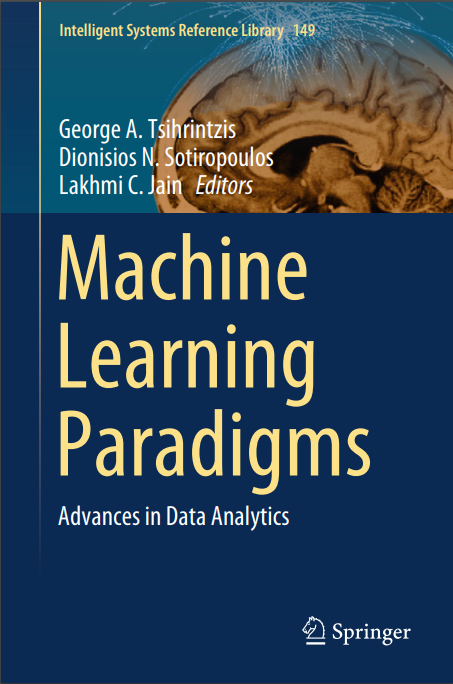
0.png

1.png

2.png
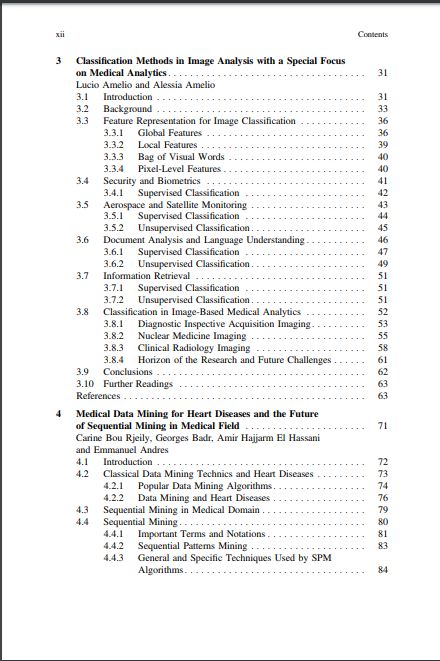
3.png
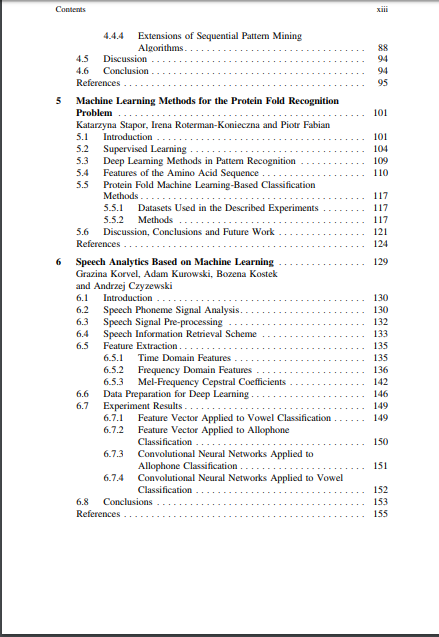
4.png

5.png
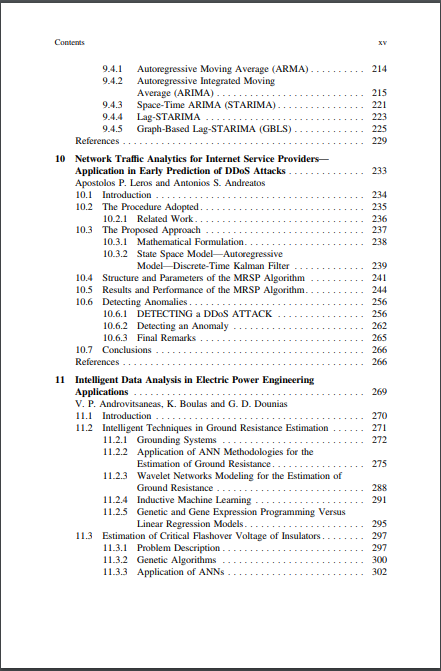
6.png
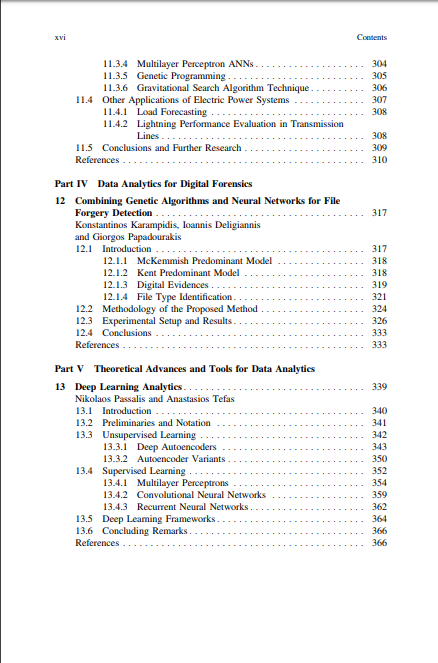
7.png




 京公网安备 11010802022153号
京公网安备 11010802022153号
顶一下,感谢分享,
顶一下,感谢分享!
顶一下,感谢分享!